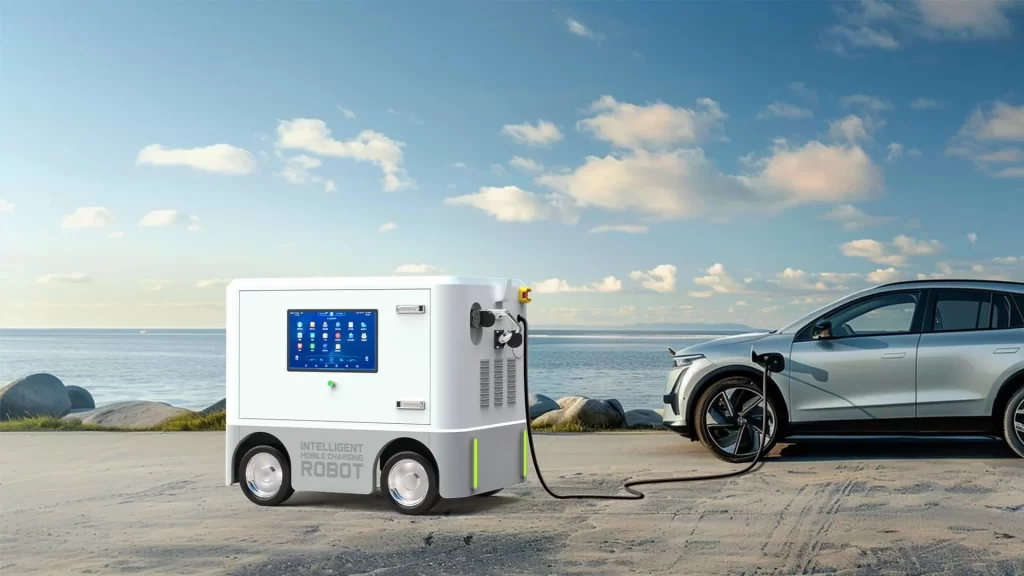Introduction
With the global shift towards sustainable energy and the fight against climate change, electric vehicles (EVs) are becoming increasingly popular. Singapore, known for its commitment to innovation and technology, is no exception to this trend. The city-state has been actively promoting the use of EVs, aiming to phase out internal combustion engine vehicles and have all vehicles run on cleaner energy by 2040.

However, the widespread adoption of EVs hinges heavily on the availability and accessibility of charging infrastructure. While fixed charging stations are being deployed across the island, they may not always provide the most convenient solution for EV owners. This is where mobile EV chargers come into play.
The State of EV Charging in Singapore
As of the latest available data, Singapore has been ramping up the deployment of EV charging points, with an ambitious target to have 60,000 charging points by 2030. These charging points are split between public car parks and private premises, ensuring a wide coverage for EV owners.
Despite these efforts, challenges remain. Most charging points are located in car parks, which may not be accessible for all EV owners. Additionally, the charging process can be time-consuming, often requiring several hours to fully charge a vehicle.
The Need for Mobile EV Chargers in Singapore
Given the limitations of fixed charging stations, mobile EV chargers present a compelling solution. These chargers offer a level of flexibility and convenience that fixed stations cannot match. They can be used anywhere, anytime, providing a solution for EV owners who may not have easy access to fixed charging stations.
For instance, residents of older apartment buildings, where installing fixed charging stations may not be feasible, can use mobile chargers instead. Similarly, EV owners who need to travel to areas with limited charging infrastructure can bring a mobile charger with them, ensuring they can always charge their vehicle when needed.
Furthermore, mobile chargers can also serve as a backup power source. In the event of a power outage, a mobile EV charger can be used to power a house, making it a valuable addition to any home.
Overview of Mobile EV Chargers
Mobile EV chargers come in various models, each with its own set of features and specifications. One of the most versatile options available in the market are the mobile charging trucks, available in four distinct models: 30kW, 60kW, 120kW, and 200kW. These models come with capacities of 31kWh, 62kWh, 125kWh, and 215kWh respectively, catering to different charging needs.

The 30kW, 60kW, and 120kW models are equipped with wheels for easy movement and can be remotely controlled. They come with a 21-inch 1080P display and support App control for user convenience. The 200kW model, on the other hand, is equipped with a trailer bracket for attaching to a car’s trailer hitch and comes with a 7-inch display.
The Role of Mobile EV Chargers in Singapore's EV Ecosystem
Mobile EV chargers can play a significant role in complementing Singapore’s existing charging infrastructure. While fixed charging stations are critical for creating a city-wide network for EV charging, mobile chargers can fill the gaps and provide solutions for specific charging needs.
Mobile chargers can be particularly useful in areas where the installation of fixed charging stations is challenging, such as older buildings, heritage sites, or remote areas. They can also provide a convenient charging solution during large events or gatherings, where the demand for charging may temporarily exceed the capacity of fixed stations.
Furthermore, the off-grid capabilities of mobile chargers can be invaluable in emergency situations. For example, during a power outage, a mobile charger can provide a much-needed power source, not only for EVs but also for other essential household appliances.
Case Study: Mobile Charging Trucks
Mobile charging trucks are a prime example of how mobile EV chargers can offer a flexible and convenient charging solution. These trucks are portable, equipped with wheels, and can be used both on-grid and off-grid. They can be quickly recharged within 1-2 hours and support 99.99% of electric car brands on the market.
In addition to their charging capabilities, mobile charging trucks come with a host of other features. They support App operation and 4G/5G communication, have a cycle life of over 6,000 times, and are equipped with BYD lithium iron phosphate batteries, ensuring safety and durability.
Conclusion
In conclusion, mobile EV chargers, such as mobile charging trucks, can play a crucial role in supporting the growth of EVs in Singapore. By offering a flexible and convenient charging solution, they can help overcome the limitations of fixed charging stations and make EV ownership more accessible and appealing to the public. As Singapore continues to push towards a greener and more sustainable future, mobile EV chargers will undoubtedly be a key piece of the puzzle.




